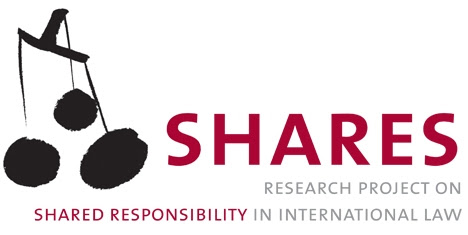Posted by: Bérénice Boutin
As usually for international military operations led by an international organization, States participating in the NATO-led Operation Unified Protector placed their military contingents under the operational command of NATO. However the Rules of Engagement – which define the conditions under which members of a national contingent can engage force – may differ amongst participating States.
The Netherlands, for instance, decided to send planes to Libya but limited their mission to providing support in enforcing the UNSC Resolution, while forbidding them to participate in ground bombings. In military terms, the Dutch forces can provide surveillance, intelligence or air-to-air refuelling, but they do not engage in air-to-ground missions. This limited engagement probably stems from a will of limiting the Dutch responsibility in case of a wrongful act of the coalition. However, one can wonder to what extent the Netherlands could be held liable for the injuries resulting of wrongful acts of the Operation Unified Protector.
The first question is whether acts of contributed troops would be attributable to the contributing States at all. Indeed, it is well established that when an international organization is entrusted with operational command and control over national contingents, the acts of the troops are presumably attributable to the organization under Article 6 DARIO, as it would a priori have effective control over the acts of the troops. Nevertheless, it is now more often argued that attribution of the acts of troops to an organization does not exclude attribution to the State of the contingent, where this State exercised effective control over its troops as well. Therefore, the acts of troops could possibly be attributed to States and not only to NATO. The rationale for dual attribution in international military operations lies in the share of authority and control that a State necessarily retains over its own troops in the form of training obligations and disciplinary powers, which provides him with some level of effective control over its troops. The wrongful acts of the troops could thus be attributed to their sending State if they are the result of insufficient training and/or discipline.
Further to attributing acts of troops to the sending State together with NATO, one could envisage the joint responsibility of all participants in the NATO-led operation, in the sense that wrongful acts would be attributable to each State. This argument was made by Brownlie in his pleading in the Case concerning the Legality of the Use of Force. The argument of the joint responsibility of NATO member States for their military operations seems to rely on the specificity of NATO being a military alliance through which States act. However, this progressive argument leading to holding the Netherlands responsible for acts it did not itself commit is probably not the strongest.
More convincingly, the responsibility of States limitedly involved in the operation could be sought on the ground of aid and assistance given in the commission of an internationally wrongful act. The supportive role of the Dutch planes, providing surveillance and intelligence, could easily qualify as aid and assistance provided to the main coalition partners. This aid was provided with the full knowledge of how it will be used and with the view of facilitating the operations. In that case, the State would not be directly responsibility for the wrongful act itself. However, as shown by the Corfu Channel case, the liability obligation arising from indirect responsibility could maybe consist of an obligation to make full reparation for the injury. In other words, a party injured by a bombing could attempt to claim full reparation from the Netherlands even though it would not be responsible for the direct violation.
Finally, a State participating in the Operation could be responsible if it was in breach of its duty to ensure respect of International Humanitarian Law by other parties. Again, the responsibility would be based on a wrongful act distinct from the main violation, but an injured party could seek to recover full reparation.
This short overview demonstrates that there are avenues to hold a State liable for injuries caused by the military operation, even though that State wanted to limit its involvement and responsibility.
